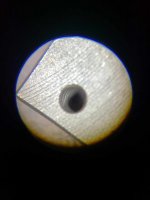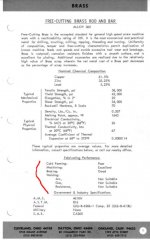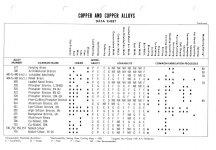Seeing something in a part today that I don't understand why.
Below is a 0-80 tapped hole. Why are the threads wavy? Goes the whole depth of the hole.
Using a Haas TM-1P, drilling with a .056" drill at 3000rpm and 2.5" plunge feedrate. Then rigid tapping with a Balax 0-80 form tap. 400 rpm, peck tapping .050 each time.
This is in .090" thick 360 Brass. Have done thousands of holes in the past which were fine. May have adjusted the drilling or tapping parameters slightly since the last batch a few months ago, but as conservative as they are, I don't have a clue with the science why this hole has wavy threads.

Below is a 0-80 tapped hole. Why are the threads wavy? Goes the whole depth of the hole.
Using a Haas TM-1P, drilling with a .056" drill at 3000rpm and 2.5" plunge feedrate. Then rigid tapping with a Balax 0-80 form tap. 400 rpm, peck tapping .050 each time.
This is in .090" thick 360 Brass. Have done thousands of holes in the past which were fine. May have adjusted the drilling or tapping parameters slightly since the last batch a few months ago, but as conservative as they are, I don't have a clue with the science why this hole has wavy threads.






